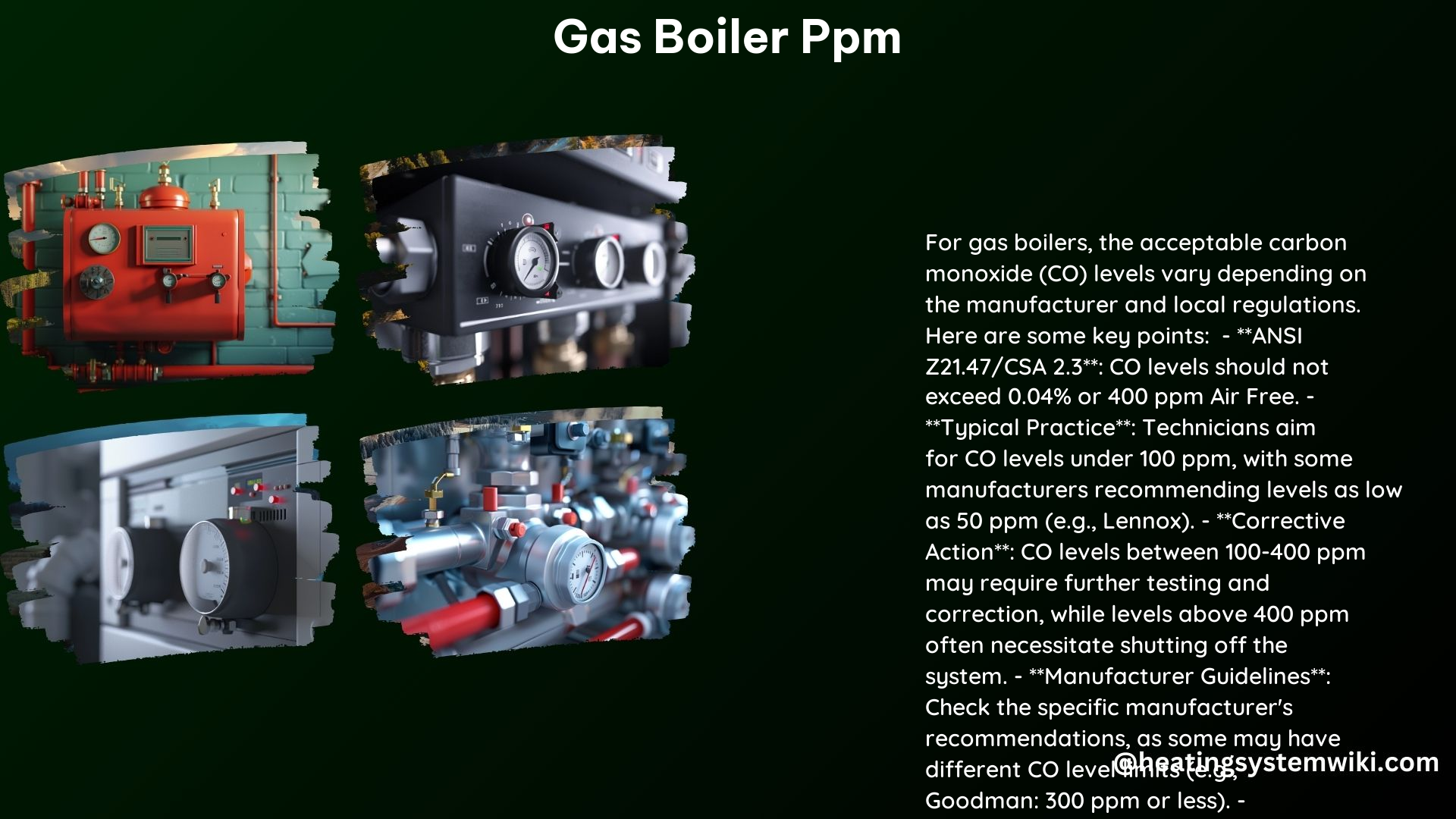The recommended parts per million (ppm) level for carbon monoxide (CO) in a gas boiler is a critical factor in ensuring the safe and efficient operation of your heating system. This comprehensive guide delves into the technical details, industry standards, and best practices for monitoring and managing CO levels in gas boilers.
Recommended CO Levels in Gas Boilers
The generally accepted standard for safe CO levels in gas boilers is below 100 ppm. This range is considered to indicate proper combustion efficiency and a well-functioning system. However, it’s important to note that some manufacturers may allow slightly higher levels, such as up to 300 ppm, for certain models.
It’s crucial to be aware of the local regulations and standards set by authorities and gas companies, as they may have stricter requirements. Many jurisdictions mandate a maximum CO level of 100 ppm or less, and equipment producing higher levels may be subject to yellow-tagging or red-tagging, indicating the need for immediate attention.
Causes of High CO Levels in Gas Boilers

There are several common factors that can contribute to elevated CO levels in gas boilers:
- Incomplete Combustion: Issues with the heat exchanger, burner, or gas pressure can lead to incomplete combustion, resulting in higher CO emissions.
- Poor Maintenance: Dirty or clogged burners, as well as other maintenance-related problems, can impair the combustion process and increase CO levels.
- Improper Installation or Setup: Incorrect installation or setup of the gas valve can result in inefficient combustion and higher CO readings.
Reducing High CO Levels in Gas Boilers
To address and mitigate high CO levels in gas boilers, consider the following steps:
- Gas Pressure Adjustment: Adjusting the gas pressure to optimize the combustion efficiency can help reduce CO emissions.
- Burner and Heat Exchanger Maintenance: Regularly cleaning or replacing burners and heat exchangers can improve combustion and lower CO levels.
- Ventilation and Airflow: Ensuring proper ventilation and airflow around the boiler can contribute to more efficient combustion and lower CO readings.
- Regular Maintenance and Inspections: Conducting routine maintenance and inspections can help identify and address issues early, preventing the buildup of high CO levels.
Technical Specifications for CO Measurement
Accurately measuring CO levels in gas boilers requires the use of specialized equipment and following specific protocols:
- Combustion Analyzer: CO levels should be measured using a combustion analyzer capable of air-free calculations to obtain an accurate reading.
- Flue Gas Sample Point: Measurements should be taken at the flue gas sample point, typically located upstream from the draft diverter or barometric damper.
- Stack Temperature Stabilization: The stack temperature should be stabilized before testing for CO, usually within 5 minutes of the boiler’s operation.
DIY Considerations and Professional Involvement
While some basic adjustments can be made by homeowners, it is highly recommended to have a professional HVAC technician inspect and service the gas boiler to ensure safety and optimal performance. Attempting complex repairs or adjustments without the proper expertise can be dangerous and may lead to further issues.
Conclusion
Maintaining safe CO levels in gas boilers is crucial for the health and safety of your home and its occupants. By understanding the recommended levels, common causes of high CO, and the technical specifications for accurate measurement, you can take proactive steps to monitor and manage your gas boiler’s performance. Remember, when in doubt, always consult a qualified HVAC professional to ensure the safe and efficient operation of your heating system.
